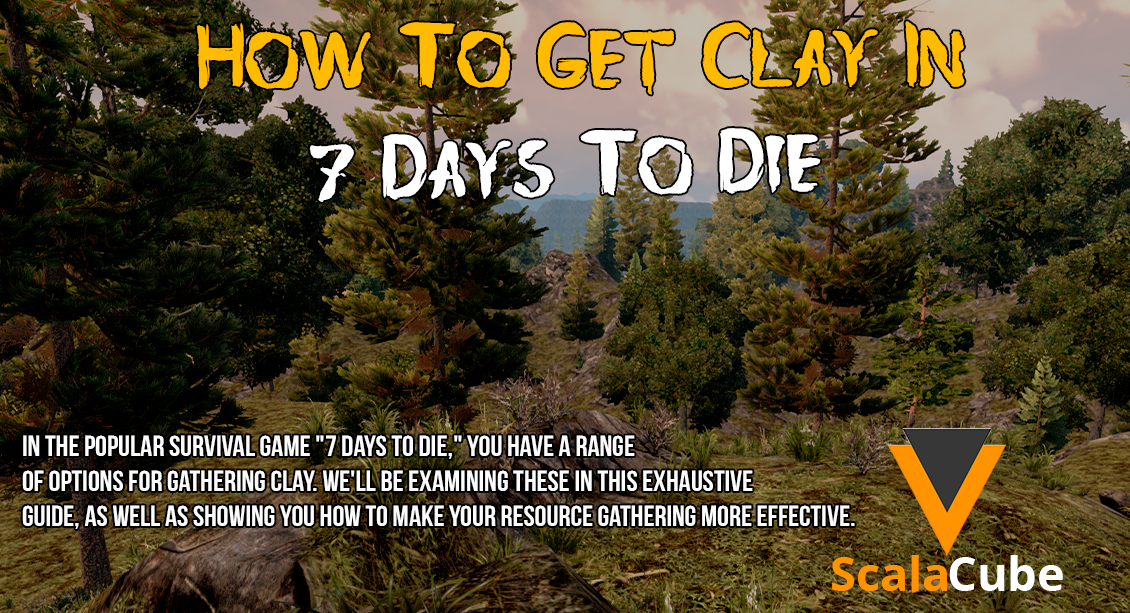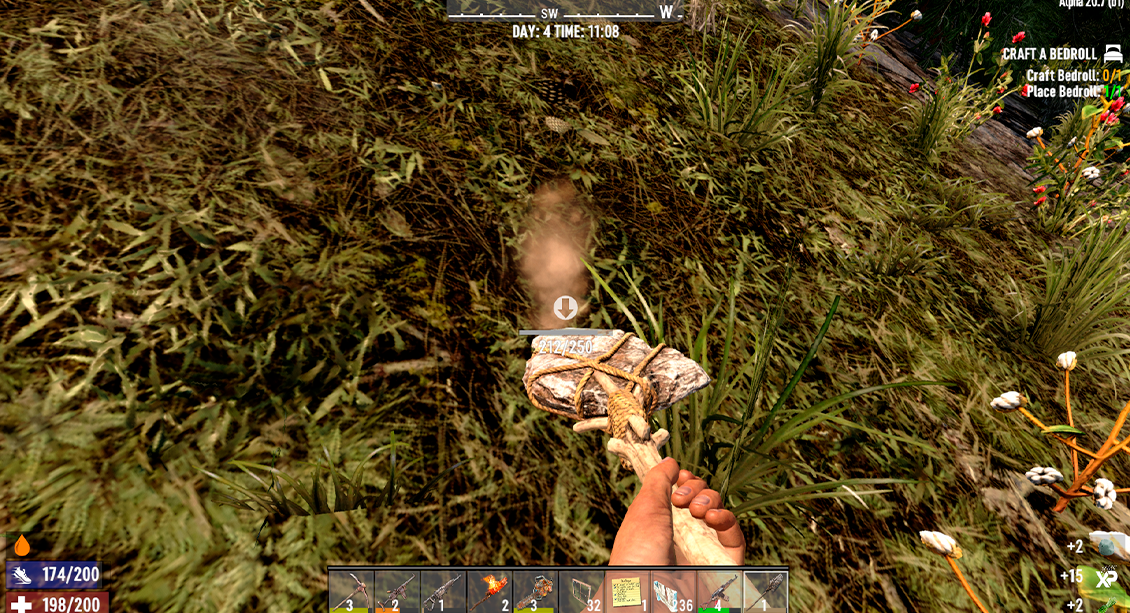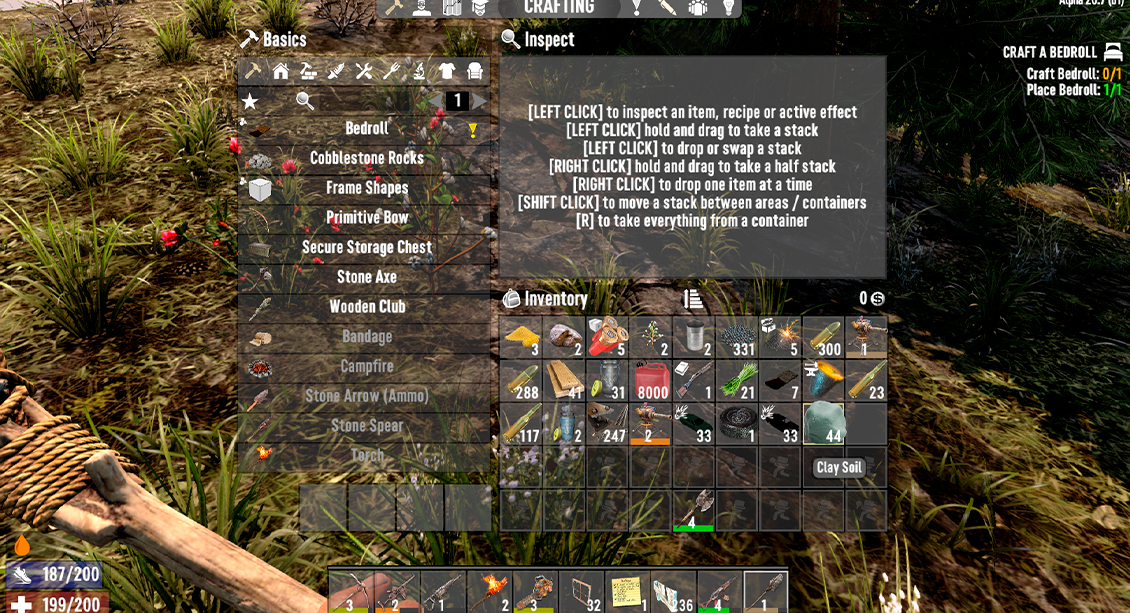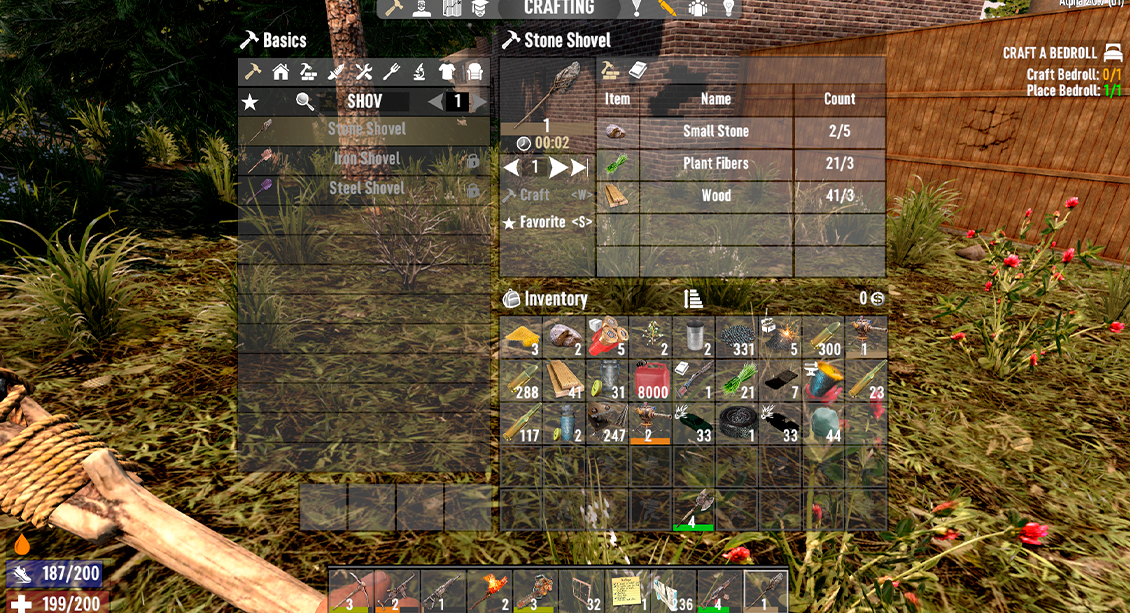How to Get Clay in 7 Days to Die

Make Your Own game Server
In the well-known survival game "7 Days to Die," there are several ways you may obtain clay. In this comprehensive tutorial, we'll look at them and teach you how to improve the efficiency of your resource harvesting.
Anyway, don’t forget to set up your 7 Days to Die Server. Continue reading when you’ve already done that!
Destroy the Ground
One of the simplest ways to locate clay in the game is to destroy the earth. You may look at any biome and break the ground to find clay. For effectively breaking up the dirt and extracting clay, a shovel is a useful tool. It is also possible, though less successful, to hit the ground with your hands alone.To begin digging, point the shovel in the direction of the earth and make contact with it. The shovel will break through the dirt gradually, adding clay to your collection. It's important to keep in mind that the kind of shovel you use might affect the yields of your resources.

Smelt Clay Soil
Another excellent supply of clay for making different products is clay soil. You must smelt clay soil in the forge to obtain it. The many biomes in the game frequently have clay soil, especially in locations with grass or dirt.You'll need access to a forge, which can be made or discovered in specific places, to smelt clay soil. Put the Clay Soil in the forge's input slot to start the smelting process. The Clay Soil is heated until it creates clay, which may then be used in crafting recipes. Don't forget, that the forge needs both a heat source and fuel like wood or coal to carry out the smelting process.

Craft or Find a Shovel
To gather clay more efficiently, it is advised that you create or obtain a shovel. Early in the game, when resources are few, you may craft a basic stone shovel out of stones and plant fibres. By doing this, you will be able to get small quantities of clay.As you go through the game and find new locations, keep an eye out for shovels with greater levels. Steel shovels are particularly helpful for finding bigger volumes of clay when resource yields are higher. An iron shovel, if you're fortunate enough to obtain one, will also provide some notable benefits above the stone one. The better-made shovel you have, the more clay you can gather in less time.

Goldenrod and Cotton
Looking for goldenrod and cotton plants grouped together is another way to spot clay spots. These plants are frequently seen in groups, which suggests that there is clay nearby. When you're exploring new locations or looking for clay in biomes where it might not be as obvious, this can be a useful visual indicator.Start digging in the area whenever you discover clumps of goldenrod and cotton plants. The likelihood of discovering clay in the ground nearby is considerably higher. When you require clay for creating, in particular, this method can help you save time and effort.
YouTube Video Guides
For those who would rather follow visual instructions or would want to acquire more techniques and advice, there are a ton of YouTube videos that walk viewers through the process of finding and gathering clay in "7 Days to Die". These films may be a helpful resource for learning about specific locations, efficient ways for obtaining clay, and creative strategies.Watching these video lessons can help you understand the gaming mechanics better and provide you with advice from experienced players. They often provide practical advice and highlight lesser-known techniques that might dramatically improve the efficiency of your clay collecting.
Whether you're a new player or have been playing for a while, these video lessons will help you improve your gaming abilities and provide creative methods to acquire clay in the gam
Can I find clay in specific biomes, or is it available everywhere in the game?
Clays appear in any type of biome in "7 Days to Die." In truth, you can find clay by tearing up the ground with a shovel or, in other biomes that possess comparable regularities—like cotton, an indicator in its own regard of a location with clay near, and the goldenrods too—clumsily searching for clumps. So, you will have a chance to locate clay within the forest, desert, or winter biome.
Are there any specific tools I should use for gathering clay?
Yes, using a shovel is the most efficient way to acquire clay. For the first few stages of the game, a stone shovel will suffice; however, a steel or iron shovel will perform better. Shovels constructed of steel in particular are quite effective in extracting larger volumes of clay. Investing in better shovels will increase your capacity to collect clay.
How much clay can I expect to gather at once?
The amount of clay you may collect at once will depend on the tool you employ. Without a shovel, hitting the ground will only provide one lump of clay or clay soil at a time. But if you use a shovel, you may collect more clay in one move. Higher-tier shovels, such ones composed of steel or iron, may yield even more clay, so your resource collection will be more efficient.
Can I use clay soil directly, or do I need to smelt it?
It is not possible to use clay soil directly for crafting. Conversely, clay soil may be melted in a forge to create usable clay. For recipes that need you to create items and reinforce your base after it has been melted, you can utilize clay. Melting clay soil is a vital step in obtaining clay for your artistic needs.
Can I automate clay gathering in any way?
Unfortunately, there is no way to fully automate the process of acquiring clay in the game. It requires using a shovel to physically excavate or search for certain visual cues. However, if you play on a multiplayer server or with pals, you may divide up the labour and collaborate to gather clay faster. To extract clay as efficiently as possible, one player might focus on digging while another smelts the clay soil.
Takeaway
This is exactly right on that point. Some explanations of addiction and recovery do not stand exclusively by themselves. The best results come from mixing several.For example, you could look for goldenrod and cotton plants while taking a shovel and digging down.
Make Your Own game Server
Copyright 2019-2025 © ScalaCube - All Rights Reserved.